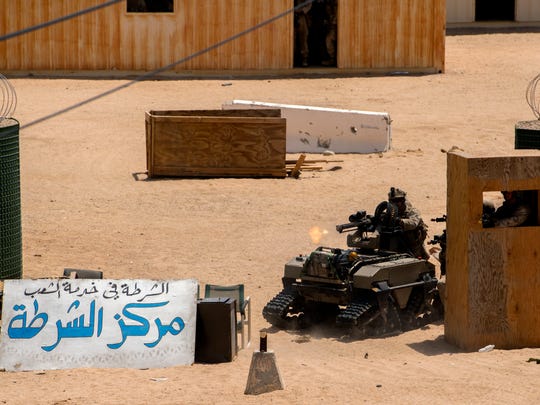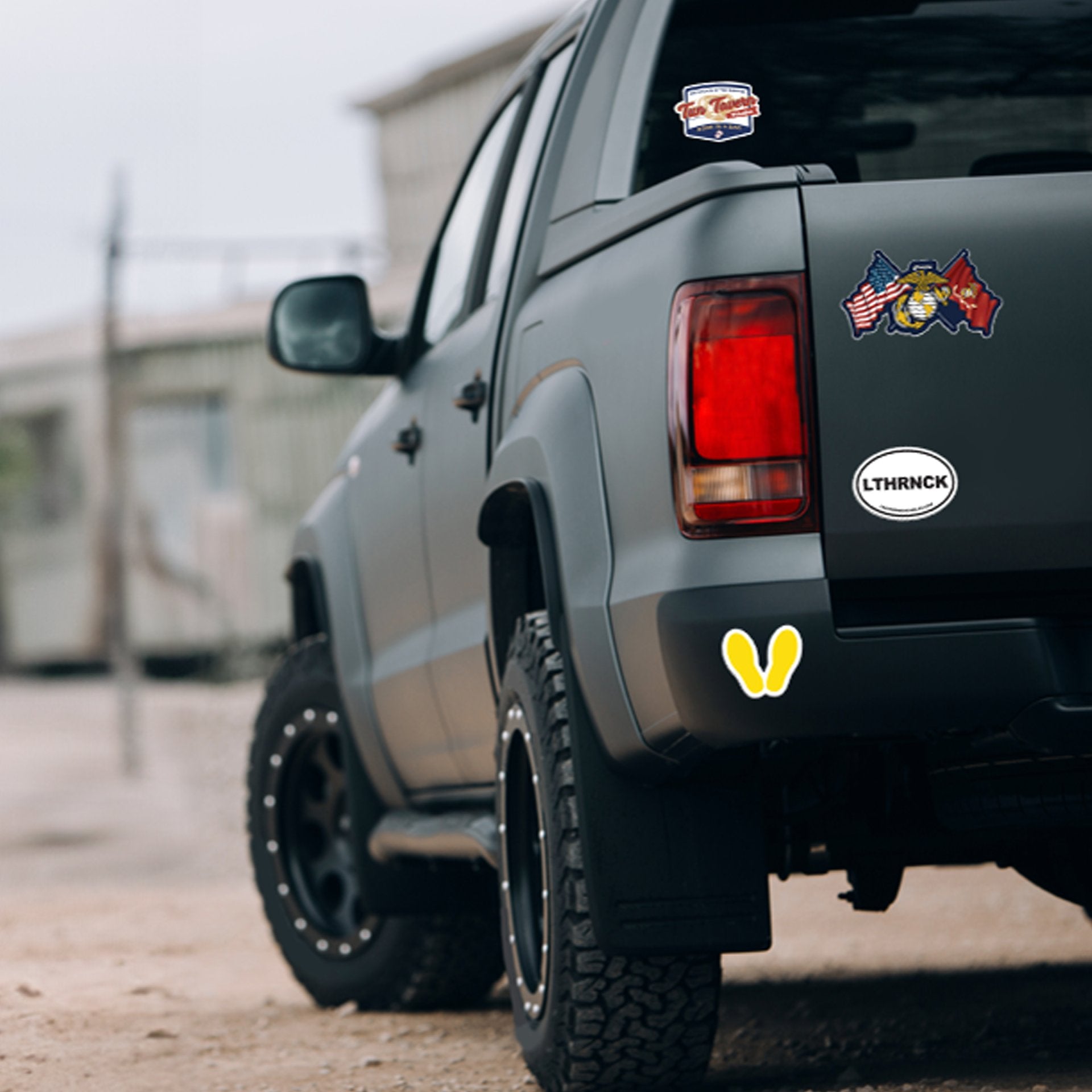
Marines fire the Weaponized Multi-Utility Tactical Transport Vehicle. (Photo: Cpl. Thor J. Larson/Marine Corps)
This July, the USMC rolled out new PFT and CFT standards, intended to optimize the physical performance of a Marine. Tougher testing, harder combat and physical fitness regimens, and a new scoring system along with flexed BMI standards are all in place to ensure a harder, better, faster, stronger Marine than ever before. The new standards are launching in January of 2017, ready for a new breed of fighters.
So how about the technology to keep up with them? An 18-month experiment at Twentynine Palms is testing new technologies that, with the help and feedback of the Marines conducting it, hopes to "transform the basic infantry unit into a deadlier revolutionized team."
"The Marine Corps must be prepared to counter and defeat a range of adversaries in high-tech environments, leaders say. And the company landing team, which has long been considered the backbone of the infantry, could get a major makeover.
Kilo Company, 3rd Battalion, 5th Marines, was tapped by Commandant Gen. Robert Neller earlier this year to help the Corps figure out what these teams need to be successful. The grunts were recently sent out to the desert in varying-sized teams, equipped with new high-tech gear like drones, robotic vehicles — some with weaponry — and self-supporting energy systems.
The goal is to make this updated force, which was coined the expeditionary landing team, more self-sufficient and combat ready.
“Future threats will evolve in ways that the current force is not postured to address,” the commandant wrote. “Our potential and current adversaries continually innovate and develop new capabilities, many of which now equal or exceed our own. This unstable and increasingly dangerous global situation is further complicated by a constrained resource environment.”
When Kilo Company arrived here last month, they were flown into a mock urban environment via helicopters and MV-22B Ospreys. Their mission was to assist after a United Nations helo went down in a foreign town that had the potential to turn hostile. The Marines could face conventional military threats as well as irregular warfare and possible cyber attacks during the exercise. Capt. Joe Patterson, Kilo’s company commander, had reason to believe his Marines faced a credible risk of being ambushed, so he opted against traditional patrols that could leave them vulnerable to threats like roadside bombs.
Further complicating the mission was the need for Patterson and his Marines to find reliable sources of power and water. There were no options for quick resupplies from their ship, which housed their headquarters element, or large-scale logistics support. The company was in their desert on their own.
What made this exercise unlike any others, though, was the gear the Marines were given to help sustain themselves — and that was a game changer, said 1st Lt. Casey Kociuba, Kilo Company's executive officer.
The Marine Corps Warfighting Laboratory equipped the Marines with items like the Small-Unit Water Purification System and the Joint Infantry Combat Prototype, which can harvest a Marine's energy to charge up equipment, in order to make them far more self-sufficient. They also had self-driving vehicles that could help carry their equipment, special medical gear, and the drones they used to collect intel and drop bombs.
It was a big difference from a seven-day exercise Kilo Company participated in last year when they had to rely on aircraft to deliver water to a nearby landing zone. Kociuba said the Marines spent hours trekking to that spot to bring the water back to their base. It not only left them feeling hot, tired and thirsty, but also pulled them away from their combat mission. "Having those vehicles ... and technologies has allowed us to fight,” Kociuba said."
The Marines also tested small drones to find enemy forces and identify friendly positions when communications went down. Alford said the Warfighting Lab is on the hunt for drones that can take off and land vertically and operate from the sea.
It’s technology that can’t come fast enough for Marines.
[They] also need strong weaponry, so officials are considering new armed autonomous vehicles. A remote gun — or robogun — would give a unit more firepower while risking fewer lives. It can also provide covering or suppressive fire.
The Kilo Marines also used the Modular Advanced Armed Robotic System, or MAARS, a small, tracked unmanned ground vehicle outfitted with an M240 machine gun and 40mm grenade launcher. They also tested the Robotic Vehicle Modular outfitted with a 7.62mm minigun.
But high-tech gear isn't the end-all. The Marine Corps is also looking at the makeup of platoons and squads, potentially adding new assistant squad leaders that could be responsible for flying drones and handling some of the gear.
“We can become way more effective
as a platoon and we can take on more difficult tasks because we have this
equipment,” Cybulski, the first platoon commander, said. 'At the end of the
day, a lot of it is going to save Marines' lives.'"
And that’s worth fighting for.
(Read more here!)
Fuentes, Gidget. "The Marines are conducting a test that could drastically change how combat troops deploy", Special to Marine Corps Times 1:44 p.m. EDT August 15, 2016. Web. August 16, 2016.
Bacon, Lance M. and Harkins, Gina. "11 Things Marines need to know about the new PFT, CFT and body composition rules." Marine Corps Times 10:09 a.m. EDT July 3, 2016. Web. August 16, 2016.





9 comments
1
1
1
1)
1
1
1"'`--
1
1
1